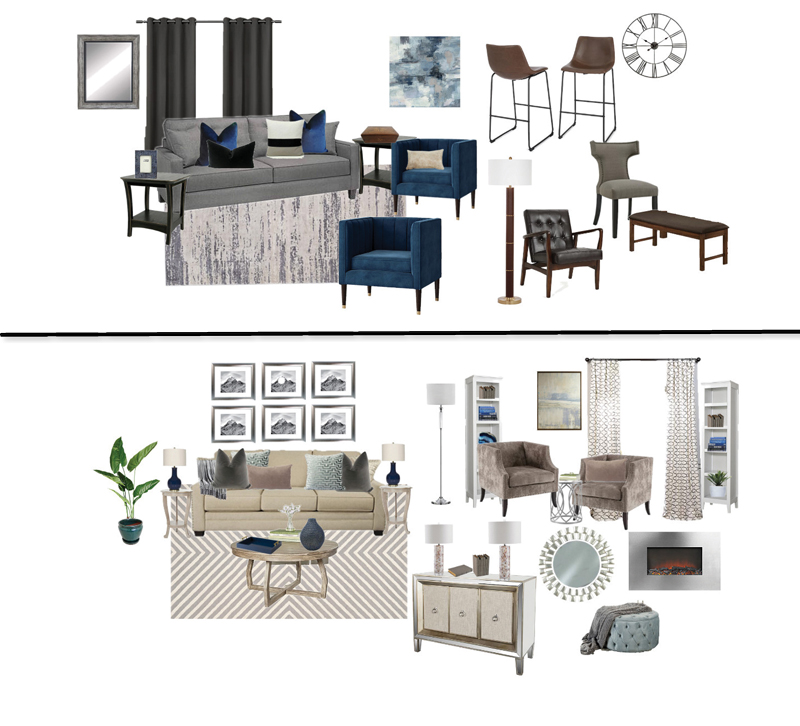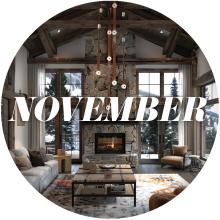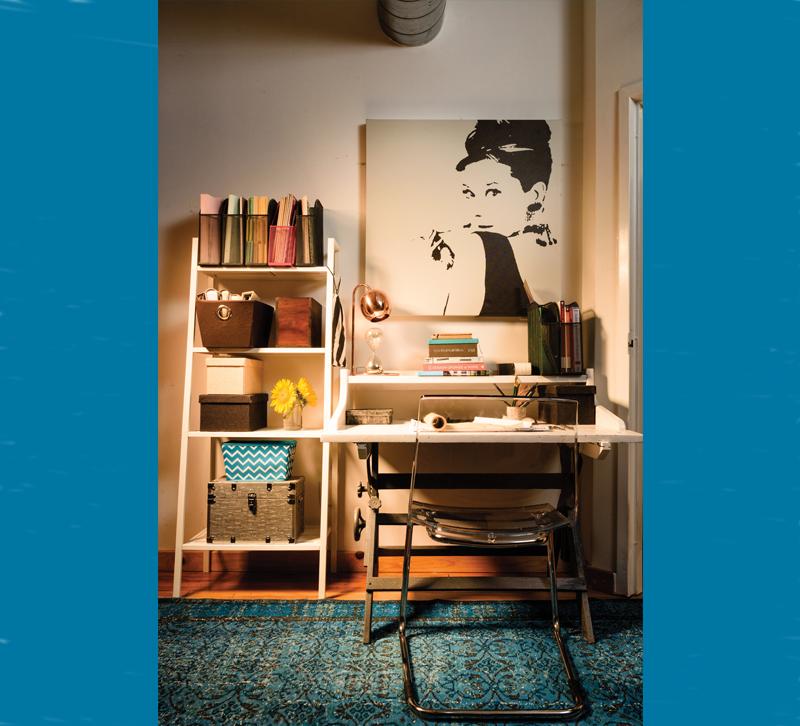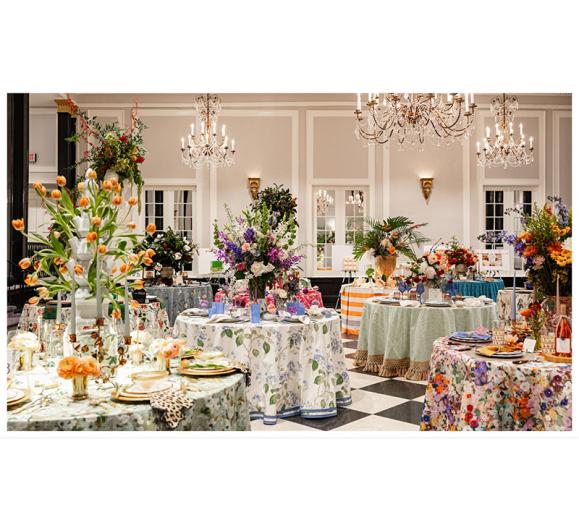At the moment, Amazon cannot come through a computer screen and pierce a person’s ears, and for mainly that reason, Claire’s Inc., the teen and tween jewelry and accessories brand found in every major mall in the U.S., thought it was reasonably protected from the online giant. Earrings, bracelets, Justin Bieber merchandise — all of it could be bought online, but customers already going to Claire’s for ear piercings would be more likely to buy in the store. And then in March 2018, Claire’s filed for Chapter 11 bankruptcy, and that logic blew up in flames.
Until recently, the interior design community remained fairly insulated from competition on the internet, but now with sites like Havenly and Homepolish and the ease of information access from HGTV, ApartmentTherapy.com and countless blogs, consumers feel more empowered than ever to strike out on their own and consult with a designer only in certain circumstances. Some view it as a devaluation of interior design services.
But others see it as a challenge.
As consumers’ digital expectations and capabilities grow, some interior design firms are embarking on a new course and chasing a new type of client. Rather than handling the project from concept to installation, these firms offer an e-service that allows for more input from the client and less hands-on work from the designer. The result is a new segment of interior design that’s launching firms and adding extra income to the traditional route.
A New Crop of Clients
Rasheeda Gray, owner and designer at Gray Space Interior Design in Pennsylvania, prides herself on her ability to make interior design approachable and attainable for every homeowner. When she launched her business in 2016, she added an e-design service to her website, thinking it would be a less expensive option for a homeowner that wanted that designer connection but couldn’t afford a full service. It might work for a single-room project, she thought.
Six months later, no one had bitten, but Gray’s traditional design clients kept coming. One day while out on an introductory consultation call — the second step in Gray’s five-step design process — a client welcomed Gray into her home and gave her a tour. As they walked through the home, the client pointed out vintage pieces she’d found at flea markets and told Gray over and over that she wasn’t afraid to get her hands dirty. Gray wondered if this DIY-savvy client would make a good fit for her e-design service, especially when she learned what sort of budget this client had in mind. Later, when she sat down with the client and her husband, Gray asked if they would be interested in utilizing her e-design service, and right away, the clients signed on. They loved the idea.
Not far away in Connecticut, designers and best friends Trisha Kasmin and Yasmin Thornton noticed something else changing with their clients at the interior design firm they both worked at. After presenting a design, the client would have some suggestions. Sometimes the client would find the same or similar product for less online. Sometimes he or she would find a completely different product and ask that it be incorporated into the design. And other times, they just wanted to get into the design themselves and make heavy suggestions.
“We noticed that this kept happening. It wasn’t just a one-time thing,” Kasmin recalls.
And then Kasmin’s boyfriend got a job in California, and she decided to go with him. In a way, the move jumpstarted an idea that Kasmin and Thornton had been kicking around for a while: an internet interior design service in which the client handles the purchase and installation. In this age of the internet, Kasmin recalls, it seemed like the right time to start offering interior design online, and in February 2017, Kismet Interiors was born.
All three designers found the same type of client. Gray says her e-design clients are often professional females under 40 who have no kids and yet struggle with never having enough time. They have smaller budgets, and they like West Elm, Crate and Barrel, Pottery Barn and Wayfair. Right now, these e-design clients make up about 15 to 20 percent of her clients.
Most of Kasmin and Thornton’s exclusively online clients are in their late 20s and early 30s, and they vary from young moms to even bachelors. They’re browsing Pinterest and shopping online, and although they have an idea of what they want, they can’t quite pull their rooms together on their own. Their budgets vary — usually falling around $5,000 — as well as their needs and locations.
“I’ve had someone in Florida who had a designer previously, and they just wanted to add finishing touches,” Kasmin says. “They didn’t want to spend as much as they did with a traditional designer, so they thought this was a good way to add in other pieces that could complement what they already had.”
No matter their demographics or needs, all e-design clients have one thing in common.
“These clients have an idea of what they want,” Gray says. “They need direction.”
How E-Design Works
All of Gray’s traditional clients follow a simplified (simplified for the client, that is) five-step process — they start with a questionnaire to help Gray understand their style, any needs that have to be met and how they want the space to function. Once the client completes the questionnaire, Gray schedules an at-home consultation. For an hour and a half, Gray will tour the client’s home and answer any questions the client has, even questions that don’t quite fall into what the client is asking for.
If the client signs on, then Gray puts together the floor plan, design/mood board and budget sheet. For traditional clients, once they approve everything, Gray moves forward with purchasing and installation.
“Once I provide all the tools e-design clients need to execute, then I’m hands off,” Gray says.
At Kismet Interiors, Kasmin and Thornton spent months researching and brainstorming how to bring their design aesthetic and style to the internet, and they settled on a blend of traditional design with some all-digital elements. Like Gray’s clients, Kismet clients start with a questionnaire, only this one is mostly to help Kasmin and Thornton get acquainted with the client and break the ice. After receiving the questionnaire, the designers will follow up for a little more information and recommend one of their three packages. If all goes well, the client will agree and sign on.
Instead of an in-person consultation, Kasmin and Thornton will set up a phone or Skype call, which will include instructions for how to measure the room.
“It’s kind of a more hands-on approach for the client, but it’s also what makes it more affordable,” Kasmin says.
Once Kasmin and Thornton have all the measurements and the client has settled on a design package — the $150 Floor Plan package, the $300 Refresher package or $500 Full Design package — the designers get to work putting together the floor plan and the mood board. Clients get two revisions included with their package. Any other revisions cost extra (Gray, too, offers two rounds of revisions and then bills by the hour). After everything has been approved, Kasmin and Thornton send a full purchase list and instructions for what to buy first and how to install everything. At that point, it’s up to the client to finish up the design, though Kasmin says that most clients purchase their products right away.
In total, most projects take about one to two weeks to complete, depending on how responsive the client is. Thornton says putting a Full Design package together takes about eight to 10 hours.
It may seem odd for a personal service like interior design to exist solely online, but Kasmin and Thornton have an arsenal of digital tools to help them communicate their message. Their digital portal, powered by Mydoma, acts as a one-stop shop where clients can message the designers, pay invoices and access their mood boards, floor plans, purchase list and installation instructions.
Perhaps the most invaluable tool for Kasmin and Thornton has been the internet itself. They blog regularly, which helps prospective clients get a feel for their personalities, and beautifully designed spaces and tips fill up their social media feeds. While Kasmin and Thornton are open to traditional design for clients in their prospective areas, they’re happy in their digital space.
“The main idea is that we’re on the internet,” Kasmin says. “That’s how we want it to be.”

Balancing Traditional and E-Design
Gray loves the hands-on approach of traditional design. She loves collaborating with the client to plan their dream home and then working with contractors and manufacturers to put her vision together. Given the choice, she says she prefers traditional design to e-design any day, but she can’t deny that e-design does have some great benefits to her business.
Because the client handles the purchasing and the installation, Gray only needs to complete steps one through three of her five-step process. Though the budgets may be smaller than traditional clients, the shortened time with these clients allows Gray to complete her work in a smaller timeframe, and that means a much faster turnover for her.
“I can complete a design project in two to three weeks max,” she says.
E-design clients also help Gray pad her roster when she’s too busy to take on another traditional client, but not as busy as she could be. Bringing on an e-client adds to her revenue stream and helps her pick up a little extra cash where she otherwise would have been waiting for her current clients to finish up before taking on more.
But e-design clients do come with some problems that Gray can’t fix. She’s had some clients wait to order recommended products only to find out later that the product was out of stock.
“I’ve had someone come back to me and say, ‘Hey, I got this and it’s broken,’ and that’s outside the scope,” she says.
It’s frustrating for Gray, who would normally take care of the problem for a traditional client, to deal with this, so she tries to recommend products from bigger retailers with good return policies.
The Answer to DIY
Ever since HGTV shows convinced consumers that they too could redesign their kitchens for $10,000, interior designers have fought an uphill battle to reset their clients’ expectations and encourage more trust in the designer. Pinterest, Houzz and design blogs seemed to have exacerbated the problem. For several years now, the American Society of Interior Designers’ State of the Industry report has highlighted potential internet disruptors from crowdsourcing in 2015 to web-based services like Havenly and Homepolish in 2018.
“Surveys conducted by Houzz in the past 12 months show residential interior designers barely holding on to their market share, while contractors and design-build firms have grown theirs,” the report reads. “In addition, smart device design applications, cloud-based design software and tools, design project crowdsourcing websites, and low-fee web-based design services, along with free advice from design media websites and design blogs, while not directly competing with designers, foster the impression that one does not need to hire a designer.”
The society called on designers to “promote their unique expertise and ability to provide holistic solutions that address the entire spectrum of client concerns,” but no one’s called on designers to meet clients where they seem to be going.
Gray doesn’t see the e-design part of her business growing too much, and her traditional clients — much like most other firms — need and want a more hands-on design experience. But Thornton sees a strong future for e-design, one that embraces the internet-savvy design lover who still needs an expert opinion.
“I feel like it’ll be a balance. I really like dealing with people so it’s kind of funny because I’m like, “I don’t want to go to that automated thing, I want to talk to a person, I don’t want to do that,’ but I think Kismet is both. You’re doing it online, but you’re still dealing with a person.”
Anatomy of Kismet E-Design








